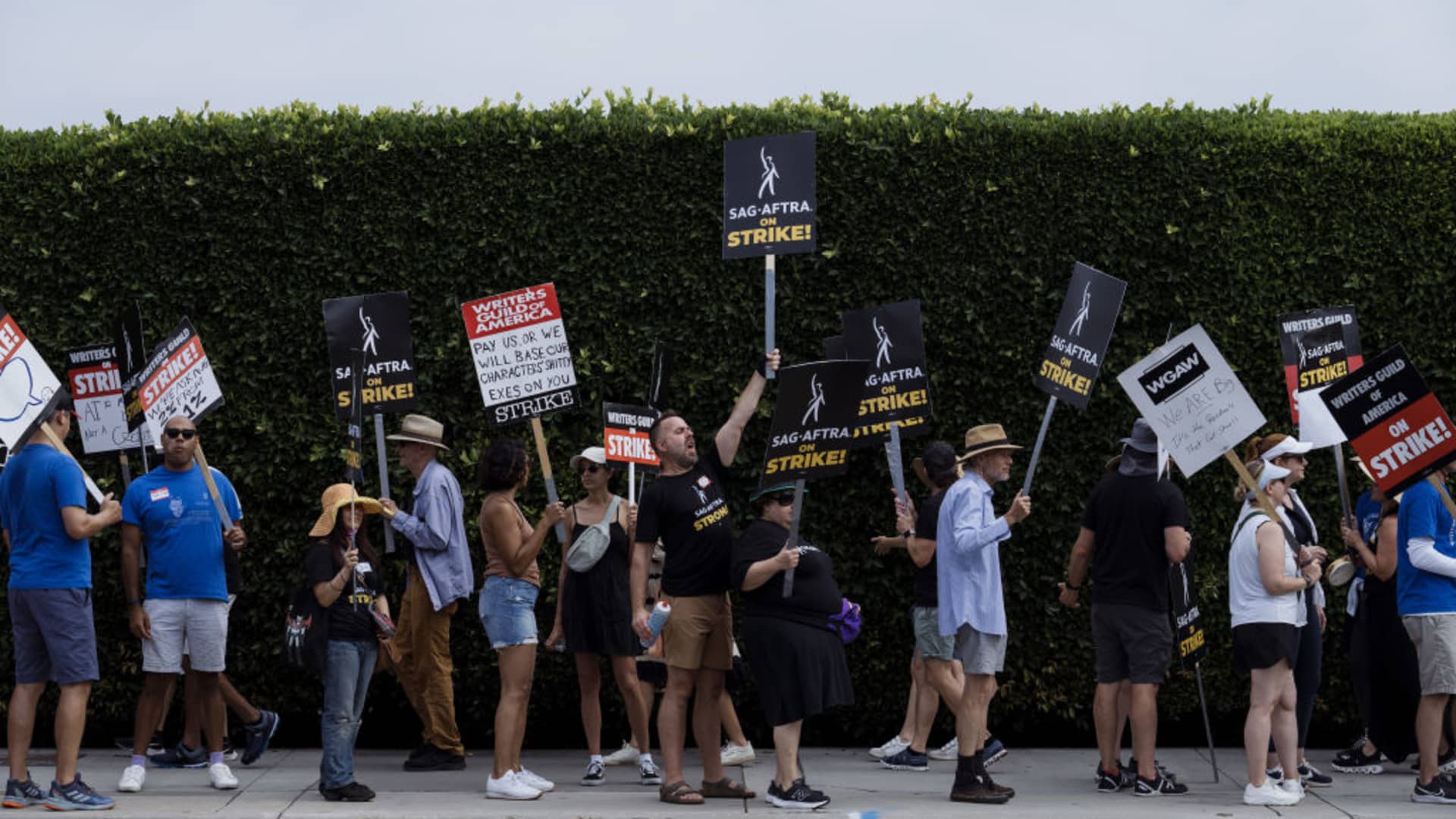The “summer of strikes” needs a new name — there is no sign of a slowdown in workers walking off the job this fall.
Some 362,000 workers have gone on strike so far in 2023, compared with 36,600 over the same period in 2021, according to data by Johnnie Kallas, a PhD candidate at Cornell University’s School of Industrial and Labor Relations, and the project director of the ILR Labor Action Tracker.
“We have found that many workers are increasingly frustrated with decades-long rising income inequality,” Kallas said.
If the United Auto Workers union strikes expand to include most, or all, of the 150,000 workers who could strike, “then 2023 could end up being the highest since 1986,” Kallas said.
Employees who withhold their labor can face a number of consequences, including losing their job and health insurance, experts said. As a result, they should learn what protections may be available to them.
“Strikes are a powerful tool for exercising power, but because our labor law is so weak it comes with great risk for workers,” Sharon Block, a professor at Harvard Law School and the executive director of the Center for Labor and a Just Economy, said in a previous interview with CNBC.
Here’s what to know.
Many, but not all, workers have the right to strike
The National Labor Relations Act of 1935 codified the right to strike into law. As a result, all workers covered by the NLRA have the right to participate in lawful strikes, Block said.
What is a lawful strike?
The National Labor Relations Board defines two classes of lawful strikers: those protesting unfair labor practices at their workplace and those who are fighting its economic conditions.
“If workers are standing together in a strike for better wages and working conditions, they should feel confident that their strike is protected,” Block said.
That includes workers who are not in unions, she added, “as long as they act collectively.”
That last part is important.
“Strikes have to be ‘collective action’ to be protected,” Kenneth Dau-Schmidt, a law professor at Indiana University Bloomington, told CNBC earlier this year. “Generally that means you have to do it as a group.”
Two people can constitute a group, he said, but “the larger, the better.”
Even then, there are exceptions.
Those in the private sector covered by the Railway Labor Act, which includes most railway and airline employees, are subject to that law rather than the NLRA.
“Workers covered by the Railway Labor Act are also allowed to strike, but there are many more obstacles and procedures for them to get through before they can strike,” Dau-Schmidt said.
“The RLA system is set up to facilitate mediation and presidential or congressional intervention before a strike, so big railway strikes are rare,” he added.
Most government employees are prohibited from striking in the U.S. Only a handful of states — about eight — have passed their own laws permitting certain public sector workers to strike.
Meanwhile, Dau-Schmidt said: “No state allows police or firefighters to strike.”
Job security at risk for strikers
Under the NLRA, workers can’t be fired or discriminated against for participating in a strike.
However, economic strikers can be permanently replaced if their employer hires someone else to do their job, Dau-Schmidt said: “Permanent replacement looks a lot like firing from the employees’ perspective.”
If a striker’s replacement leaves the job for whatever reason, the worker who was on strike must be offered the position before anyone else is hired, though, Block said.
“Strikers just have to make an unconditional offer to return and wait for an opening,” she said.
If workers were on strike due to unfair labor practices, they may have a right to reinstatement, but that process, Dau-Schmidt said, “can often take a long time, and people often move on to other jobs.”
And employees “can never be sure their strike will be found to be an unfair labor practice strike,” he cautioned.
Pay and health insurance is ‘a real problem’
Workers who go on strike generally lose their wages, Dau-Schmidt said. “If you don’t work, you don’t get paid.”
Yet if the strike was over unfair labor practices, which was caused by violations of the law by their employer, they may qualify for back pay once the strike resolves, he added.
Strikes have to be ‘collective action’ to be protected. Generally that means you have to do it as a group.Kenneth Dau-Schmidtlaw professor at Indiana University Bloomington
Economic strikers typically also get their other workplace benefits, including health insurance, nixed.
“Health insurance is a real problem,” Dau-Schmidt said. “Employers can suspend or end coverage.”
But, he said, “sometimes employers won’t kick employees off of the health insurance right away because it escalates the conflict and almost ensures an unhappy ending.”
Unemployment benefits for strikers
There is no federal law guaranteeing workers on strike jobless benefits. But two states — New York and New Jersey — provide some unemployment coverage to strikers.
There is also a bill working its way through the Massachusetts Legislature that would offer unemployment benefits to those who have been on strike over a labor dispute for 30 days or more.
